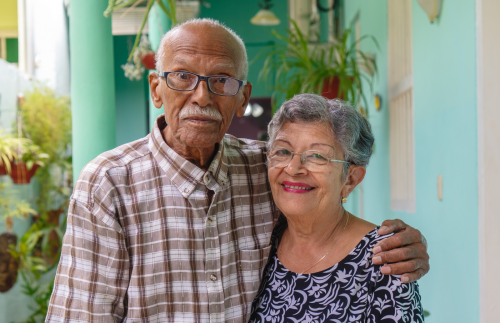The development of digital technology has transformed nearly every aspect of human life. Today, working, shopping, communicating, and even exercising can be done with just one touch on a smartphone screen. This innovation has brought great convenience and efficiency. However, on the other hand, such progress has also created major changes in human lifestyles — including physical activity, eating habits, and mental health.
Modern society tends to live fast and practically. Many people prefer instant foods and sweet ready-to-drink beverages while spending most of their time in front of computer or phone screens. Physical activity has become increasingly limited, especially for those who work in offices or from home (work from home). Unknowingly, these habits have serious impacts on the body’s metabolism, one of which is an increased risk of diabetes mellitus, particularly type 2 diabetes.
According to the International Diabetes Federation (IDF), in 2024 there were more than 540 million adults worldwide living with diabetes, and this number is expected to keep rising every year. Indonesia itself is among the top ten countries with the highest number of diabetes cases. Data from Indonesia’s Basic Health Research (Riskesdas) 2023 show that the prevalence of diabetes continues to increase, especially among the productive age group (30–50 years).
This phenomenon is a serious concern because diabetes is not merely a disease of high blood sugar. If left uncontrolled, it can lead to chronic complications such as heart disease, kidney failure, blindness, and nerve damage. Ironically, many people are unaware that they are already in the prediabetes stage — a condition where blood sugar levels start to rise but have not yet reached the diabetes threshold.
In the midst of today’s fast-paced lifestyle and lack of physical activity, awareness of maintaining blood sugar levels is often neglected. In fact, with the right knowledge, simple habit changes, and regular health monitoring, the risk of diabetes can be controlled early.
This article will discuss how the modern lifestyle contributes to the rise of diabetes risk, the dangers of uncontrolled blood sugar, simple steps to maintain health in the digital era, and how technology such as the Glucosure Autocode device from Isotekindo can help us stay alert and healthy amid our busy modern routines.
1. Modern Lifestyle and Instant Eating Habits
Life in the digital era demands everything to be fast and efficient. Many people work more than eight hours a day in front of computers with very little physical activity. Moreover, the convenience of food delivery services has made the consumption of fast food and high-sugar meals a daily habit.
This situation leads to three main problems:
- Excess calories and added sugar from processed foods and sweet drinks.
- Lack of physical activity, which decreases insulin sensitivity.
- Stress and insufficient sleep, which trigger cortisol spikes and raise blood sugar levels.
This combination is the primary cause of the increasing number of type 2 diabetes cases among younger and working-age populations.
2. The Dangers of Uncontrolled Blood Sugar
High blood sugar levels over the long term can cause severe damage to body organs. People with diabetes who fail to manage their glucose levels are at risk of complications such as:
-
Heart disease and stroke due to hardening of the arteries.
-
Kidney damage (diabetic nephropathy).
-
Vision problems (diabetic retinopathy).
-
Nerve damage (neuropathy), which can cause slow-healing wounds.
Many people are unaware that they are already at high risk. Symptoms such as frequent thirst, excessive urination, fatigue, unexplained weight loss, or slow-healing wounds are often ignored. Recognizing these early signs is crucial to enable faster and more effective management.
3. Simple Steps to Maintain Blood Sugar in the Digital Era
Preventing diabetes doesn’t have to be complicated. By making simple lifestyle adjustments, you can keep your blood sugar stable:
- Watch your diet: reduce added sugar, choose high-fiber foods, and consume fresh fruits and vegetables.
- Do light physical activity daily: take a 30-minute walk, use stairs instead of elevators, or exercise at home.
- Get enough sleep and manage stress: aim for 7–8 hours of sleep per night and avoid staying up late.
- Monitor your blood sugar regularly: especially if you have a family history of diabetes.
Regular blood sugar monitoring can now easily be done at home with the help of modern, user-friendly measuring devices.

4. Glucosure Autocode by Isotekindo: A Modern Health Monitoring Solution
One of the most innovative health devices that supports metabolic condition monitoring is the Glucosure Autocode from Isotekindo Intertama.
Key Benefits and Features of Glucosure Autocode:
- 🩸 Requires only 0.6 µL of blood for glucose measurement.
- ⚡ Fast and accurate results within just 6 seconds.
- 🧍♂️ Easy to use for anyone without the need for laboratory testing.
- 💼 Portable and practical design, suitable for home or travel use.
- 🧠 No coding required (Autocode feature) for greater convenience.
- 🔋 Auto power-off after 1.5 minutes of inactivity to save battery life.
With Glucosure Autocode, users can independently monitor their health and take preventive action early before conditions become serious. This device is also highly beneficial for families who wish to maintain a healthy lifestyle together.
Technological progress brings tremendous convenience to our lives, but it also poses significant health challenges. A fast-paced lifestyle, physical inactivity, and high-sugar consumption are major contributors to the growing risk of diabetes in the modern era.
Maintaining blood sugar levels is not only the responsibility of those with diabetes but also an important preventive measure for everyone. Through simple lifestyle changes, self-awareness, and regular monitoring using devices like Glucosure Autocode from Isotekindo, we can remain productive and healthy amid the demands of digital life.
Healthy living is not just an option — it’s an investment for a better future. Let’s celebrate World Diabetes Day with a renewed commitment to control our blood sugar and manage our lifestyle starting today.
References
-
International Diabetes Federation (IDF). (2024). IDF Diabetes Atlas, 11th Edition. Brussels, Belgium.
-
Ministry of Health, Republic of Indonesia. (2023). Situation and Analysis of Diabetes in Indonesia. Jakarta: Health Data and Information Center.
-
American Diabetes Association. (2023). Standards of Medical Care in Diabetes—2023. Diabetes Care, 46(Supplement 1).
-
World Health Organization (WHO). (2023). Diabetes Fact Sheet. Geneva: WHO.







